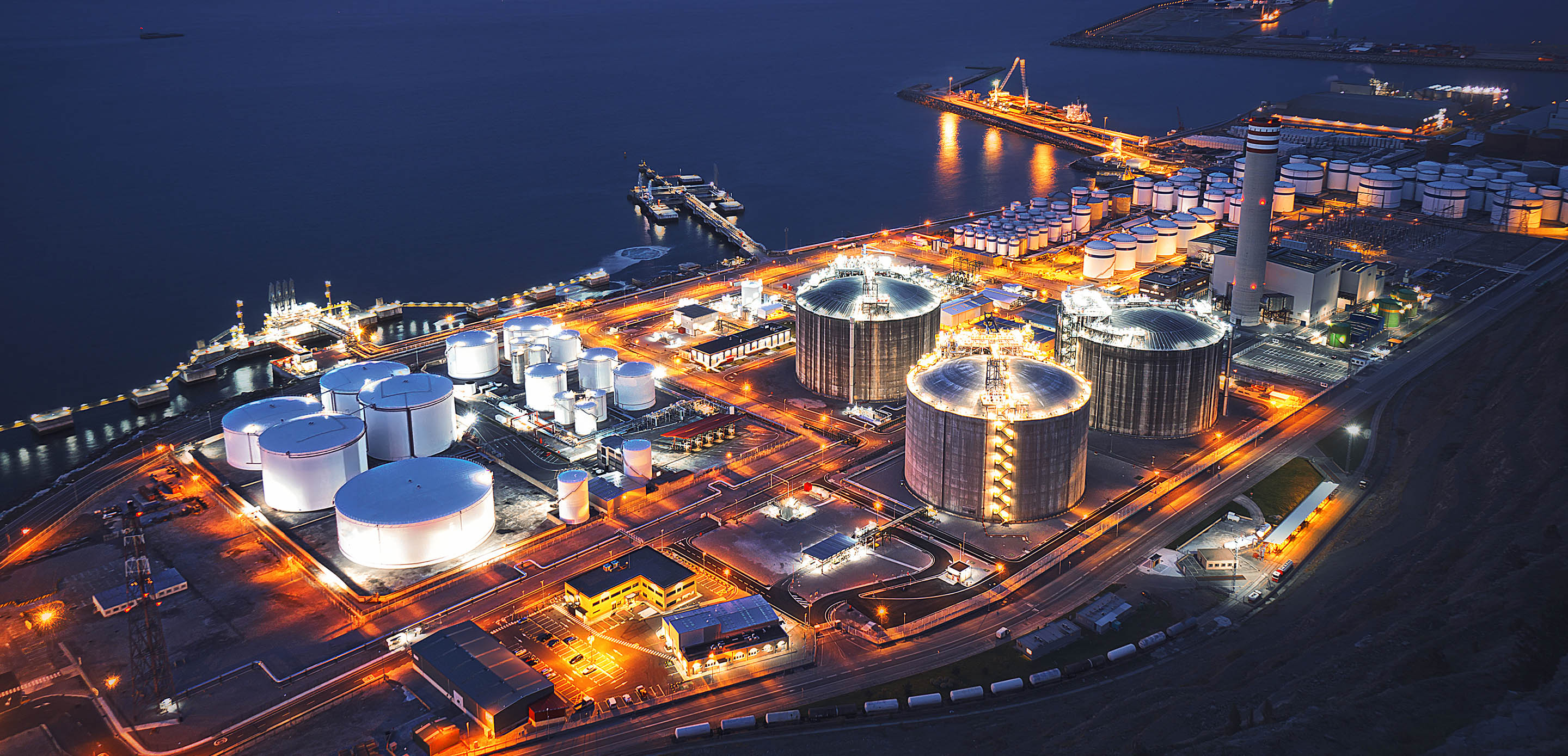- Article

- Sustainability
- Sustainable Financing
Opportunities in the net zero transition – a look at export credit agencies
Export credit agencies (ECAs) are playing an important role in helping businesses grow and evolve their operations and facilitating their journey to net zero.
The role of export credit agencies (ECAs) is continuing to evolve. In this article we look at the changing landscape, and particularly how ECAs are supporting the transition to net zero. We’ll also look at the Arrangement on Officially Supported Export Credits, which has been recently agreed to by members of the OECD. And finally, we’ll examine how ECAs continue to support cross-border investment flow, ensuring liquidity is available when it is needed.
In 2023, the world’s export credit agencies (ECAs) recorded USD191.5 billion in volumes, covering 598 transactions. This number eclipses the high of USD135 billion recorded in 2018 before the pandemic1.
A return to a more buoyant lending environment reflects a welcome resumption of momentum in international trade post the pandemic. Importantly, it is also indicative of companies starting to invest again, particularly in activities that help drive the transition to a more sustainable economy.
The timing of a return to such levels is important to help the world move towards net zero carbon targets. As further indication, in 2022 the IEA Sustainability Recovery Tracker estimated that governments worldwide had allocated USD710 billion for long-term clean energy and sustainable recovery measures2. Cleaner energy is a key factor in reaching net zero, and this hints at the scale of capital being mobilised on the sustainability front.
The development of renewable infrastructure can be facilitated by lending from banks with the support of ECA guarantees, covering borrowers’ repayment obligations, to deliver clean energy, sustainable transport and technology in the coming years. The benefit of these guarantees is that they lower the risk of lending for private institutions.
“ECA-backed renewables energy related volumes jumped from around USD3 billion in H1 2022 to around USD24 billion in 2023,”3 says Manav Futnani, Global Co-Head of Export Finance, MENAT Head of Infrastructure and Asset Financing. “One of the key drivers of this momentum relies on more ECA support for capital and equipment to drive projects that help address climate change.”
A further endorsement of the role ECA’s are playing in the global transition came at the COP28 conference held in Dubai at the end of 2023. The UN Environment Programme Finance Initiative announced a partnership involving eight leading export credit agencies along with the Innovation and Knowledge Hub at the University of Oxford, Future of Climate Cooperation. The announcement came with an acknowledgement from the Executive Director of UNEP that ECAs are in a strong position to deliver more sustainable trade and support work being done by the private sector to address market gaps and deliver net-zero economies by 20504.
A new Consensus
In March 2023, members of the OECD agreed, in principle, to reform the Arrangement on Officially Supported Export Credits (commonly referred to as the ‘OECD Consensus’). The Arrangement came into force in July 20235.
The OECD Consensus, which aims to provide guidance for the use of export credits and help establish a system of fair competition among exporters, has long been crucial in levelling the playing field for ECAs, but it placed limitations on the financing terms and conditions that ECAs can offer, as well as on the use of tied finance by participating countries.
Following recommendations from the EU that ECAs be better aligned with policy goals – notably the Green Deal and the Global Gateway Initiative – the Consensus has been updated, making it more agile in response to multiple challenges from financial instability to climate change6.
For example, streamlined export credit rules to support competition and facilitate a clean energy transition includes an expansion of projects eligible under the Climate Change Sector Understanding, extended repayment tenors for up to 22 years for climate-friendly loans and up to 15 years for most conventional projects. They will also deliver a more robust transparency regime and review procedures7.
Speaking in March 2023, OECD Secretary-General Mathias Cormann said the reforms will “allow the scaling up and a better targeting of public and private finance to support climate-friendly investments and help us meet our global net zero emissions objective.8
Untying advantages
Outside of ECA financing tied to the OECD arrangement, there has also been an increase in the development and importance of untied financing where ECAs provide support that is not tied to the procurement of goods or services from exporters.9
Instead, credit is delivered on the proviso that it is in the ECA’s national interest in helping to secure a stable supply of energy or to progress the journey to net zero. Eligibility is driven by strategic interests of the ECA’s country, such as developing export strategies, a sponsors’ investment and shareholding in projects, or securing supplies of raw materials to the ECA’s country.
As an example, Johnson Matthey received GBP400 million of sustainable financing through the UK’s export credit agency’s Export Development Guarantee scheme. The support allows Johnson Matthey to invest into research and development of hydrogen projects and circular technologies, hydrogen in particular being a key growth sector for them. This transaction shows how ECAs are supporting businesses in a broad way to transition, instead of the traditional method of providing project-based financing tied to specific contracts.
The loan was coordinated by HSBC who acted as ECA Coordinator, Sustainability Coordinator, Coordinating-MLA, and Facility Agent.
Driving liquidity
There is ample evidence of ECAs supporting projects that further the path to net zero, with ECAs playing a role in hydrogen, EV batteries and offshore wind sector development across the globe10.
For example, the Export–Import Bank of Korea (KEXIM), Korea Trade Insurance Corporation (K-SURE), Euler Hermes (German ECA) and a consortium of international commercial banks have provided USD2 billion in financing for a large EV battery gigafactory in Ivancsa, Hungary11.
Irrespective of whether they provide support through tied or untied arrangements, ECAs must keep pace with a rapidly evolving global economic landscape and the ongoing climate emergency, and in doing so, extend their support to non-traditional areas.
The enormous scale of these energy transition is driving companies to seek alternative sources of credit. ECAs can be one way of offering long-term finance arrangements for international and cross-border projects alike.
Corridors to growth
Economic, technological and industrial advances across the world, particularly those driven by the net zero transition, create opportunities for ECAs.
In 2023, the Spanish ECA supported the development of the largest wind farm complex in Australia, by providing guarantees under its untied Green Investment Policy in a AUD1.1 billion term loan arranged and coordinated by HSBC.
HSBC also led a financier group of 15 banks and 7 ECAs to finance the Hai Long offshore wind project, a 1,022MW offshore wind farm in Taiwan. The transaction was delivered against a backdrop of heightened technical challenges in the sector and geopolitical tensions, and the involvement of ECAs were crucial in delivering the transaction.
“Our global Export Finance platform makes us a good working partner on deals that bring multiple ECAs together into a transaction,” explains Futnani. “The Hai Long offshore wind project under development in the Taiwanese Strait has secured a NTD117 billion financing package from a syndicate of international banks, local lenders and ECAs and will be one of the largest offshore wind farms in Taiwan.”12
What is particularly pertinent is that in recent years the backing of ECAs has been crucial in supporting this cross-border investment flow, further fuelling growth of the ECA sector, which has already provided billions of dollars in financial support for businesses and opened the door to liquidity across regions. What’s more, it’s clear ECAs are playing an important role in the global transition and have the ability to evolve to meet changing needs.
“There was a large increase in ECA volumes in 2023 – a jump of 90% over 2022 volumes according to TXF data. With the OECD Consensus brining modernisation and additional flexibility, the expectations is for this trend to continue, with ECA volumes expected to grow in 2024 and beyond,” concludes Futnani.
This document is issued by The Hongkong and Shanghai Banking Corporation Limited (HSBC). The information contained herein is derived from sources we believe to be reliable, but which we have not independently verified. HSBC makes no representation or warranty (express or implied) of any nature nor is any responsibility of any kind accepted with respect to the completeness or accuracy of any information, projection, representation or warranty (expressed or implied) in, or omission from, this document. No liability is accepted whatsoever for any direct, indirect or consequential loss arising from the use of this document. Any information (including market date, prices, values or levels) contained here are indicative only and any examples given are for the purposes of illustration only and may vary in accordance with changes in market conditions. The opinions in this document constitute our present judgment, which is subject to change without notice. We are not obliged to enter into any actual trade with you based on the any information contained herein. This document does not constitute an offer for, or advice that you should enter into, the purchase or sale of any security, commodity or other investment product or investment agreement, or any other contract, agreement or structure whatsoever This material is intended for distribution to, or use by, Professional Investors only, as defined in the Hong Kong Securities and Futures Ordinance. The document is intended to be distributed in its entirety. No consideration has been given to the particular investment objectives, financial situation or particular needs of any recipient, you should conduct relevant due diligence and analysis, and seek necessary independent professional advice. Unless governing law permits otherwise, you must contact a HSBC Group member in your home jurisdiction if you wish to use HSBC Group services in effecting a transaction in any investment mentioned in this document. This document, which is not for public circulation, must not be copied, transferred or the content disclosed, to any third party and is not intended for use by any person other than the intended recipient or the intended recipient's professional advisers for the purposes of advising the intended recipient hereon.
HSBC does not provide legal, tax, accounting, regulatory or other specialist advice and you should make your own arrangements in respect of such matters accordingly. You are responsible for making an independent assessment and obtaining specialist professional advice in relation to the merits of the proposals contained herein. In particular, this document may contain certain references to regulation. HSBC makes no representation that the references to regulation, if contained herein, are exhaustive. There could be other references to regulation that may also be relevant to the proposals. HSBC does not give advice on regulation. You should consult your own advisers on regulation.
Copyright. The Hongkong and Shanghai Banking Corporation Limited 2017 - 2024. ALL RIGHTS RESERVED. No part of this publication may be reproduced, stored in a retrieval system, or transmitted, on any form or by any means, electronic, mechanical, photocopying, recording, or otherwise, without the prior written permission of The Hongkong and Shanghai Banking Corporation Limited.
- TXF Export Finance Data report, 2023
- Overview and key findings – World Energy Investment 2022 – Analysis - IEA
- https://www.txfnews.com/articles/7582/export-finance-h1-2023-a-rising-tide-lifts-all-boats#:~:text=Those%20numbers%20are%20very%20similar,%245%20billion%20in%20H1%202020
- https://www.unep.org/news-and-stories/press-release/export-credit-agencies-supporting-billions-global-trade-form-net#:~:text=%E2%80%9CExport%20Credit%20Agencies%20are%20in,net%2Dzero%20economies%20by%202050.
- https://one.oecd.org/document/TAD/PG(2023)7/en/pdf
- https://www.europarl.europa.eu/RegData/etudes/IDAN/2023/702590/EXPO_IDA(2023)702590_EN.pdf
- https://one.oecd.org/document/TAD/PG(2023)7/en/pdf
- https://www.oecd.org/newsroom/agreement-to-expand-export-credit-support-for-climate-friendly-and-green-projects.htm
- https://www.txfnews.com/articles/7455/Untied-commodity-lending-A-critical-ECA-space
- TXF Export Finance Data Report, H1 2023
- https://www.globaltradealert.org/state-act/67589/republic-of-korea-eximbank-and-k-sure-provide-financing-to-support-sk-on-in-construction-of-battery-plant-in-hungary
- Hai Long Offshore Wind-Project Overview

Asia's economies to transition to a new normal in 2024
Asia will shift to a new normal in the Year of the Dragon, as buoyant consumption offsets subdued demand for exports.

